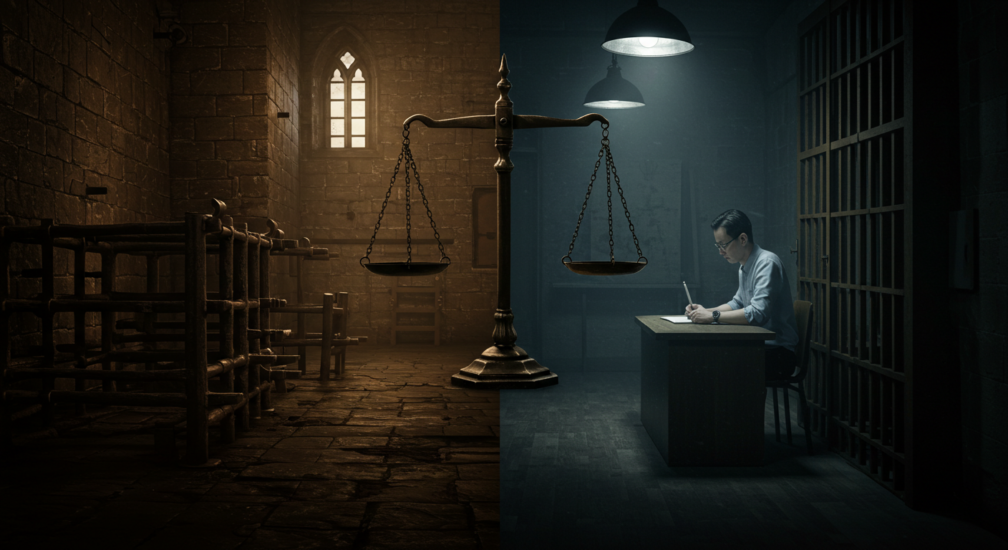The Origins and Evolution of Torture
Torture has been a part of human history for centuries, used as a method of control, coercion, and punishment. The history of torture spans from ancient civilizations to the present day, evolving in both technique and justification. In the Middle Ages, torture became an institutionalized practice, often used for extracting confessions or punishing criminals. Devices such as the rack, the iron maiden, and the breaking wheel were not only tools of punishment but also instruments of fear and oppression.
Torture in the Middle Ages: Methods and Justifications
During medieval times, torture played a significant role in law enforcement and religious persecution. The torture in the Middle Ages was often sanctioned by authorities to extract confessions or to instill terror among dissenters. The Catholic Church, through the Inquisition, justified the use of interrogation under extreme duress as a means of identifying heretics.
Public executions and physical torment served as both deterrents and entertainment. Prisoners often had little chance to escape such cruel treatment, as legal systems provided few protections against arbitrary imprisonment and corporal violence.
Visitors interested in exploring the instruments and history of medieval torture can visit the Medieval Torture Museum in Chicago, where historical artifacts and immersive exhibits provide an in-depth look into these dark practices.
The Psychological Effects of Torture
The long-term psychological effects of torture are devastating. Survivors often experience trauma, including post-traumatic stress disorder (PTSD), anxiety, and depression. The fear instilled through physical and psychological torment leaves lasting scars on victims, shaping their perception of authority and control. Psychological torture, such as sleep deprivation, sensory overload, and prolonged isolation, can be as damaging as physical methods.
The Ethics of Torture: A Complex Debate
The ethics of torture have been widely debated across history. Some argue that torture can be justified in extreme cases, such as during war or espionage, while others condemn it as a violation of human rights and morality. The fundamental question remains: Can justice ever be achieved through coercion and oppression? The Geneva Conventions and the United Nations Convention Against Torture explicitly ban the use of torture under international law.
For a broader understanding of the ethical implications of torture, visitors can explore the Medieval Torture Museum in LA, which offers thought-provoking exhibits on the consequences of historical and modern torture practices.
Torture in Warfare: Past and Present
The use of torture in warfare has been documented in numerous conflicts, from medieval battles to modern counterinsurgency operations. In the past, captured enemies faced brutal treatment, often enduring extreme punishment before execution. Today, international human rights organizations scrutinize military and intelligence agencies accused of using torture as an interrogation tool. However, some governments continue to justify its use under the pretense of national security.
Torture in Modern Times: Is It Still Practiced?
Despite global human rights advancements, torture in modern times persists in various forms. Political prisoners, suspected terrorists, and marginalized groups in authoritarian regimes often fall victim to state-sanctioned violence. The existence of secret prisons and black sites raises concerns about the violation of international laws against torture and the lack of accountability for those responsible.
For those seeking an in-depth analysis of historical and contemporary torture methods, the Medieval Torture Museum in St Augustine provides an educational experience that highlights these grim aspects of human history.
The Moral Implications of Torture
The moral implications of torture extend beyond the immediate suffering inflicted on victims. Societies that condone or ignore torture often undermine their own legal and ethical frameworks. Power, control, and the justification of brutality in the name of safety create a dangerous precedent that can erode trust in governance and law.
The Role of International Law in Preventing Torture
Organizations such as the United Nations, Amnesty International, and the International Criminal Court work to uphold international laws against torture. Treaties and legal frameworks aim to prevent the systematic abuse of individuals, yet enforcement remains a challenge.
Exploring the Dark Side of History
Understanding the historical use of torture is essential for recognizing and preventing modern abuses. Museums, historical archives, and academic discussions help shed light on this difficult subject. For more articles on the history, ethics, and implications of torture, visit our blog and explore a variety of topics related to medieval and modern justice systems.
By studying torture’s past, we gain valuable insights into human behavior, the evolution of justice, and the importance of protecting human rights in the present and future.






